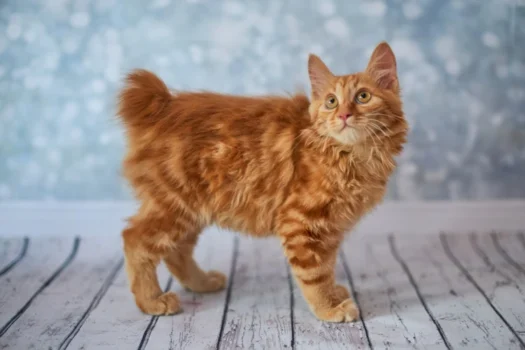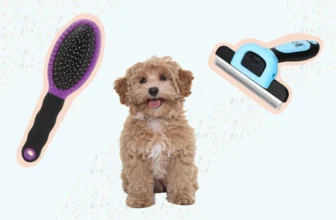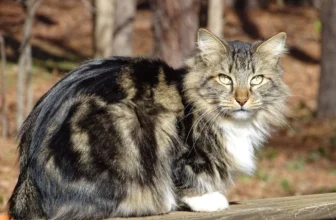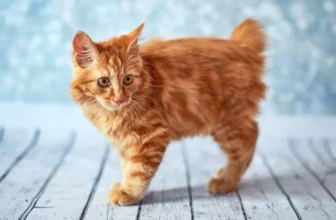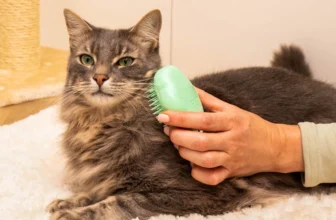As proud owners of American Bobtail cats, we’ll do anything to keep them happy and healthy. After all, they bring us so much joy and companionship! One aspect of cat care that often goes overlooked is the role of nutrition in maintaining a healthy coat. Our cats’ fur is a reflection of their overall health, and as such, it’s important to provide them with the right kinds of foods that will nourish their coat and skin. In this article, we’ll explore the relationship between diet and coat maintenance for American Bobtail cats, along with actionable strategies to improve their coat health and avoid common feeding mistakes. So, let’s dive in!
The Importance of Diet in Maintaining a Healthy Coat
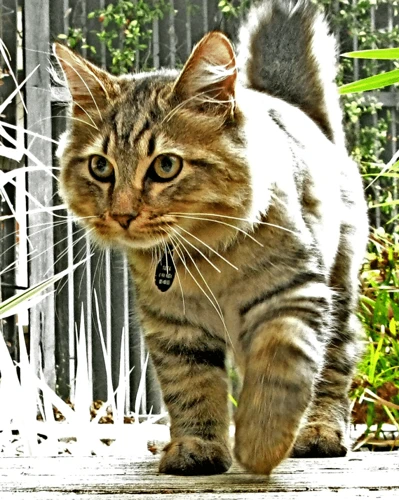
A cat’s coat is not only aesthetically pleasing, but it also serves as a valuable indicator of overall feline health. A healthy coat is a sign of a well-nourished cat, as compared to a dull or patchy coat indicates possible dietary deficiencies. While routine brushing of American Bobtail’s fur can help maintain its quality, a healthy diet is undoubtedly one of the most critical factors in ensuring ideal coat health. In this section, we will explore how a cat’s diet affects its fur and provide insights into maintaining a healthy coat in American Bobtail cats through proper nutrition. For tips on brushing your Bobtail’s fur, check out this link.
Nutrition and Balance
Maintaining a healthy coat in American Bobtail Cats starts with proper nutrition and balance . A cat’s diet should be both balanced and complete since it directly affects their coat’s condition. The cat’s diet should include a good balance of protein, carbohydrates, and fats. Your cat’s food should contain between 30 and 40 percent protein.
Additionally, the cat’s diet should have the right balance of minerals and vitamins. Minerals such as magnesium, calcium, zinc, and iron, are essential in building a healthy coat. Vitamins like vitamin A, E, and biotin are also vital in maintaining a shiny coat.
The essential amino acids in protein provide the building blocks for healthy coat growth. It is vital to feed your cat food that’s rich in high-quality proteins like meats and fish, as they provide the amino acids necessary for a healthy coat.
It’s essential to ensure that your cat is correctly hydrated. Freshwater should be provided in clean bowls and replaced at least once per day. Dehydration can cause dry and brittle fur, as well as other negative health issues.
By providing proper nutrition and balance, it can reduce the amount of brushing necessary for your American Bobtail. However, a proper diet cannot eliminate the need for regular brushing, but it can make the task more manageable. Regular brushing removes loose fur and helps prevent matting, which can be uncomfortable and sometimes painful for your cat. Brushing also allows you to bond with your pet and helps your cat relax, and can ultimately enhance its wellbeing.
To learn more about the importance of brushing and its positive effects on the American Bobtail’s coat, you can read more about the benefits of brushing an American Bobtail Cat daily.
Essential Vitamins and Minerals
Our feline friends need a well-balanced diet that provides them with all the essential vitamins and minerals they need to stay healthy. These nutrients play an important role in maintaining a healthy coat in American Bobtail Cats.
Vitamin A is important for healthy skin and coat, and also helps support the immune system. Vitamin A can be found in fish liver oil, dairy products, and some meat sources.
Vitamin E, another essential vitamin, works as an antioxidant and helps prevent damage to cells. Good sources of vitamin E include salmon, almonds, and sunflower seeds.
A healthy coat also requires a good supply of B vitamins, particularly Biotin. Biotin helps with the maintenance of healthy skin and fur, and can be found in fish, eggs, liver, and some vegetables.
When it comes to minerals, Zinc is one of the most important. It’s responsible for maintaining a healthy skin barrier and plays a role in the production of skin oils. Zinc can be found in red meats, poultry, and fish.
Another important mineral is Copper, which helps with the formation of collagen and elastin – two proteins essential for healthy skin and fur. Copper is found in liver, nuts, shellfish, and some grains.
Lastly, Omega-3 fatty acids are essential for reducing inflammation and maintaining a healthy coat. Foods rich in Omega-3s include fish oil, flaxseed oil, and fatty fish like salmon and tuna.
Without a diet that includes all of these essential vitamins and minerals, your American Bobtail Cat may experience problems like dry, flaky skin, or a dull, lackluster coat. To learn more about brushing your American Bobtail Cat’s fur, check out this article.
The Impact of Hydration
Proper hydration is a crucial factor when it comes to maintaining a healthy coat in American Bobtail cats. Hydration not only affects the coat’s appearance but also its overall quality. Dehydration can result in drying out of the skin and hair, leading to brittleness and hair fall.
To ensure that your American Bobtail is always well hydrated, make sure there is always fresh water available. Consider investing in a water fountain specially designed for cats. These fountains not only encourage cats to drink more water but also filter the water, making sure it is clean and safe.
Another good way to ensure your cat stays hydrated is to feed it wet food. Wet food consists of a higher percentage of water than dry food, which can help keep your cat hydrated. However, ensure that the food is of high quality and provides all the necessary nutrients for your cat.
Lack of hydration can also lead to the formation of hairballs, which are one of the common fur problems in American Bobtail cats. Hairballs form due to undigested hair and lack of moisture in the digestive tract. Feeding high-fiber foods can help to regulate digestion and prevent the formation of hairballs.
Incorporating sources of Omega-3 fatty acids such as fish into your American Bobtail’s diet can also improve its coat health and protect it from dryness, itchiness, and inflammation. Omega-3 fatty acids support the production of natural oils in the skin, which helps to maintain coat health and minimize shedding.
Hydration is a key factor in maintaining healthy coat in American Bobtail cats, and should not be ignored. Providing your cat with adequate water and feeding it a healthy and balanced diet can help to improve the coat’s quality and shine, reduce shedding, and minimize the need for excessive brushing or expensive grooming products.
The Relationship Between Cat Food Quality and Coat Maintenance
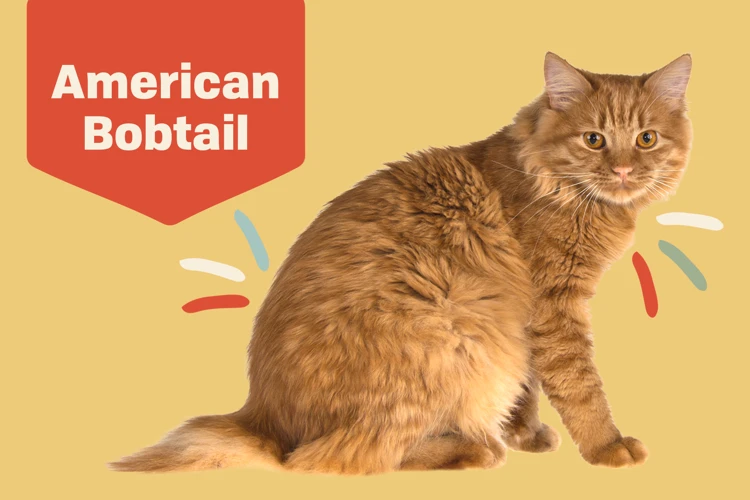
As a conscientious cat owner, you want to ensure your American Bobtail has a healthy coat that looks and feels great. One of the key factors that can impact your cat’s coat quality is the food you feed them. This may not seem obvious, but a poor diet can negatively impact skin and coat health. While high-quality cat food can help maintain their coat, poor-quality food may lead to a dull and lifeless coat. In this section, we’ll explore the relationship between cat food quality and coat maintenance, highlighting the benefits of choosing high-quality food and the risks of poor-quality options. Additionally, we’ll share dietary strategies to reduce the need for brushing your cat’s coat, and common feeding mistakes to avoid. Whether you’re a new or experienced cat owner, this section will provide valuable insights to help keep your American Bobtail’s coat looking its best. For more information on brushing your American Bobtail’s coat, check our article about daily brushing benefits.
The Risks of Poor-Quality Cat Food
Consuming poor-quality cat food can cause detrimental effects on your American Bobtail cat’s coat health. Not only does it lack essential nutrients and vitamins, but it may also contain harmful ingredients that may cause problems to their coat and overall health.
One of the risks of feeding your American Bobtail cat with cheap cat food is the lack of quality ingredients. Some cat food manufacturers may use fillers such as corn or wheat, which provides little to no nutritional value. This may lead to a higher risk of your cat developing skin irritations, and their coat may become dull and brittle.
Another risk of low-quality cat food is bacteria and fungus contamination. Cheap cat food may contain harmful substances that can cause contamination, leading to skin infections or other health problems. In some cases, it can also lead to hair loss or make your cat’s coat look unhealthy.
Lack of essential vitamins and minerals can lead to other health issues. Deficiency in vitamin E has been linked to dry and flaky skin, which can make your American Bobtail cat’s coat dull, dry, and prone to matting. Deficiency in omega-3 fatty acids can also cause dry skin and a dull coat.
To prevent these risks, it is essential to choose high-quality cat food. High-quality cat food contains ingredients such as meat, fish, and poultry, which provides essential nutrients that your cat needs to maintain healthy skin and fur. Avoid cat food with fillers or byproducts, as they provide no nutritional value for your cat.
Make sure to pay attention to the expiration date and storage instructions to prevent contamination. Keep the food fresh and avoid storing it in moist or warm areas.
By feeding your American Bobtail cat with high-quality cat food, you can ensure that they maintain a healthy coat, skin, and overall health. A healthy coat will also reduce the need for grooming, such as brushing or bathing. To learn about the differences between brushing and bathing, visit our article on Brushing vs Bathing: American Bobtails Grooming. If you’re looking for tips on how to brush your American Bobtail’s coat, check out our guide on How to Brush Your American Bobtail’s Coat.
The Benefits of High-Quality Cat Food
High-quality cat food can have numerous benefits that go beyond just maintaining a healthy coat in American Bobtail cats. Here are some of the key advantages of providing your furry friend with high-quality cat food:
| Benefit | Explanation |
|---|---|
| Supports Overall Health and Immunity | High-quality cat food often contains optimal amounts of vitamins, minerals, and antioxidants, which can help support your cat’s overall health and strengthen their immune system. This can help prevent illnesses and diseases that may negatively impact your cat’s coat and appearance. |
| Improves Digestion and Reduces Hairballs | High-quality cat food is typically formulated with easily digestible ingredients and fiber-rich sources, which can help improve digestion and decrease the likelihood of hairballs. Hairballs can affect the quality of your cat’s coat by causing matting and tangling, so reducing them can have a positive impact on your cat’s overall appearance. |
| Reduces Skin Irritation and Inflammation | Cats with food sensitivities or allergies can suffer from skin irritation and inflammation. High-quality cat food often uses hypoallergenic protein sources, such as duck or lamb, and avoids common allergens like wheat, corn, or soy, which can have a positive effect on your cat’s coat by reducing dryness, itching, and flaking. |
| Enhances Coat Luster and Shine | High-quality cat food often contains essential fatty acids like Omega-3s, which help keep your cat’s skin healthy and hydrated from the inside out. This can lead to a shinier and more lustrous coat that is less prone to dryness or dullness. |
These are just a few of the many benefits that high-quality cat food can provide for your American Bobtail cat’s overall health and appearance. It’s important to do your research and choose a cat food that is specifically formulated for your cat’s needs and preferences. By providing your cat with a nutrient-dense diet, you can help ensure that they not only look and feel their best but also stay healthy and happy for years to come.
Dietary Strategies to Improve Coat Health and Reduce Brushing
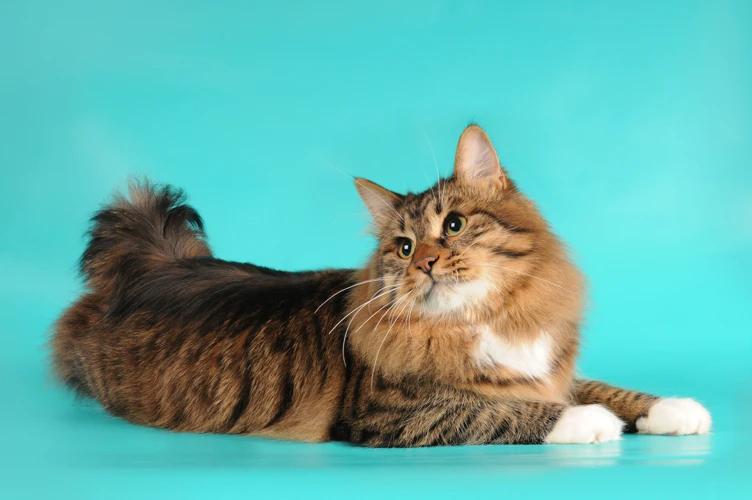
As a cat owner, you know the stress of constantly having to brush your American Bobtail’s coat to maintain its health and shine. Fortunately, there are some dietary strategies you can implement to reduce the frequency of brushing and boost your cat’s coat health. By incorporating omega-3 fatty acids and fiber into their diet, and ensuring they maintain a safe, moderate weight, you can significantly improve your cat’s coat health and reduce your own grooming responsibilities. Let’s dive deeper into these strategies and how they can benefit your furry friend.
Incorporating Omega-3 Fatty Acids
One dietary strategy to consider when trying to maintain a healthy coat in American Bobtail cats is incorporating omega-3 fatty acids into their diet. These types of fatty acids are believed to help improve coat texture and shine by reducing inflammation and moisturizing the skin. Here are some ways to introduce omega-3 fatty acids into your cat’s diet:
- Offer fish as a treat: Certain fish, like salmon, are high in omega-3 fatty acids. Offer small pieces of cooked salmon or tuna as a treat for your cat.
- Add fish oil to their food: You can purchase fish oil supplements specifically designed for pets. Simply mix the recommended amount into your cat’s food each day.
- Choose cat food with added omega-3s: Look for cat food brands that boast added omega-3 fatty acids in their formula. This can be a simple way to ensure your cat is getting enough without additional supplements.
It is important to note that while omega-3 fatty acids can be beneficial for a cat’s coat health, it’s still important to maintain a balanced diet overall. Too much of any one type of nutrient can lead to other health issues. Talk to your veterinarian about how much omega-3 fatty acids your cat should be getting each day and what the best method of supplementation is for their individual needs.
Moderating Hairball Formation with Fiber
Hairballs can be a common problem in American Bobtail cats, but incorporating fiber into their diet can help moderate hairball formation. Fiber helps prevent hairballs by promoting healthy digestion and the movement of food through the digestive tract. It also helps to bulk up the feces, which stimulates bowel movements and can prevent hair from clumping together in the digestive tract.
There are several sources of fiber to consider when trying to moderate hairball formation in your American Bobtail cat’s diet. These include:
| Fiber Source | Benefits | Examples |
|---|---|---|
| Psyllium Husk | Forms a gel in the digestive tract, aiding in the efficient movement of food and hair through the body. | Purina Pro Plan Focus Adult Indoor Care Turkey & Rice Formula |
| Pumpkin | Provides a source of soluble fiber which can aid in keeping your pet regular and prevent hairballs. | Merrick Grain-Free Real Chicken & Sweet Potato Recipe |
| Peas | Contain both soluble and insoluble fiber which can aid in digestion and promote bowel movements. | Blue Buffalo Wilderness Chicken Recipe Grain-Free Dry Cat Food |
| Oat Bran | A type of soluble fiber that can soften stool and help prevent hairballs. | Wellness Complete Health Natural Grain-Free Dry Cat Food |
When adding sources of fiber to your cat’s diet, be sure to do so gradually while ensuring they drink plenty of water to avoid constipation. Additionally, make sure the overall diet is balanced and meets your cat’s nutritional requirements. By moderating hairball formation with fiber, American Bobtail cats can maintain a healthy coat and avoid discomfort from hairballs.
Maintaining Safe, Moderate Weight
Maintaining a safe, moderate weight is essential for your American Bobtail’s overall health and the condition of their coat. Obesity can lead to a variety of health issues, including skin problems that can damage their coat’s quality. On the other hand, being underweight can cause dull, lifeless fur due to malnutrition. Here are some tips on keeping your furry friend’s weight in check:
- Regular Weigh-ins: American Bobtail cats need to be weighed regularly to monitor their weight. You can use a digital kitchen scale or take them to the veterinarian’s office to get an accurate measurement. Keep a record of your cat’s weight and adjust their feeding as necessary.
- Portion Control: Avoid free-feeding your cat and instead serve them small, measured meals multiple times a day. Consult with your veterinarian to determine a healthy portion size for your cat’s breed, age, and activity level.
- Choose the Right Food: It’s essential to select a high-quality cat food that meets your American Bobtail’s nutritional needs while also watching their weight. Look for food with high protein content and low carbohydrates and avoid those that contain fillers or artificial preservatives. Feeding your cat “people food” is not recommended as it can lead to weight gain.
- Encourage Exercise: Regular exercise is vital in keeping your cat healthy and maintaining their weight. Encourage your American Bobtail to play with interactive toys or take them on walks if they’re comfortable outside.
By maintaining a healthy and balanced diet with appropriate portion sizes and encouraging regular exercise, you will help your American Bobtail maintain a safe, moderate weight, which will contribute to a healthy coat.
Transitioning into a New Diet
When transitioning an American Bobtail cat to a new diet, it’s important to do so gradually to avoid any digestive issues. A sudden switch can lead to an upset stomach, diarrhea, and other discomforts.
A gradual transition is recommended. This can be achieved by mixing the old and new food together and adjusting the ratio over the course of a week or two.
Here is an example of a transition plan:
| Day | Old Food | New Food |
|---|---|---|
| Day 1-2 | 75% | 25% |
| Day 3-4 | 50% | 50% |
| Day 5-6 | 25% | 75% |
| Day 7-8 | 100% | 0% |
It’s also important to monitor your cat’s behavior and health during the transition. If they seem to be experiencing any discomfort or negative reactions, slowing down the transition can be helpful.
By taking a gradual approach to transitioning to a new diet, you can help maintain your American Bobtail cat’s healthy coat and overall well-being.
Common Mistakes in Cat Feeding: What to Avoid
As much as we love our American Bobtail cats, providing a healthy and balanced diet can be a bit daunting. With a plethora of dietary options available in the market, it’s easy to make mistakes when choosing cat food. Unfortunately, these mistakes could affect our cat’s coat health, and even lead to more serious health problems in the long run. To ensure that our furry friends stay healthy and happy, it’s important to be aware of the most common feeding mistakes to avoid. Let’s take a look at some of the biggest pitfalls and how to steer clear of them. Read on to learn more about what to avoid when feeding your American Bobtail cat.
Overfeeding and Incorrect Feeding Frequency
It’s common for cat owners to want to give their furry feline friends more food than necessary, but overfeeding can lead to obesity, which can negatively impact the health of your cat’s coat. Obesity can make your cat’s coat look dull, lifeless, and become prone to matting. Additionally, overfeeding can lead to other health issues like gastrointestinal problems, diabetes, and joint pain.
Incorrect feeding frequency can also cause health issues, not just overfeeding. Feeding your cat too frequently, especially with high-calorie foods or treats, can throw off their digestive system and lead to gastrointestinal problems such as vomiting, diarrhea, and constipation.
To avoid overfeeding and incorrect feeding frequency, it’s important to follow the recommended feeding guidelines for your cat’s weight, age, and activity level. These guidelines can usually be found on the packaging of your cat’s food. If you’re unsure, consult with your veterinarian to determine the appropriate amount of food your cat needs and how often they should be fed.
One way to help avoid overfeeding is to use an automatic feeder that dispenses a predetermined amount of food at set intervals. This can help prevent overeating and ensure that your cat is getting the appropriate amount of food they need.
Another common mistake is free feeding, or leaving food out all day for your cat to graze on. This can lead to overeating and obesity. Instead, it’s recommended to feed your cat at specific times and pick up any uneaten food after 30 minutes.
To ensure your cat is getting the right amount of food, consider using an feeding chart to measure out the appropriate portions. It’s also important to use a measuring cup instead of eyeballing the amount of food you’re giving your cat.
By avoiding overfeeding and incorrect feeding frequency, you can help maintain the health of your cat’s coat and overall well-being. Remember to consult with your veterinarian and follow the feeding guidelines to ensure your cat is getting a healthy and balanced diet.
| Mistakes to Avoid | How to Avoid Them |
|---|---|
| Overfeeding | Follow recommended feeding guidelines for your cat’s weight and activity level, use an automatic feeder, and measure out portions with a measuring cup |
| Incorrect feeding frequency | Feed your cat at specific times and avoid free feeding, pick up uneaten food after 30 minutes, and consult with your veterinarian |
Excessive Treat Consumption
Feeding treats to our American Bobtail cats is a great way to reward and show them love. However, excessive treat consumption can lead to various health issues, including obesity and dental problems. It is important to keep treats in moderation.
Below is a table of some common treats and their calorie content to give an idea of how quickly these calories can add up:
| Treat | Calories Per Treat |
|---|---|
| Catnip | 3 |
| Tuna (canned in water) | 30 |
| Chicken (cooked) | 25 |
| Salmon (cooked) | 40 |
| Commercial Cat Treats (1 treat) | 1.5-5 |
It is important to read the packaging and check for the recommended number of treats per day. Treats should make up no more than 10% of your cat’s daily calorie intake. Overfeeding treats can lead to an unbalanced diet and cause nutritional deficiencies.
Another issue with excessive treat consumption is dental problems. Many cat treats are high in sugar, which can lead to tooth decay and gum disease. If you notice a buildup of tartar or bad breath in your cat, reduce their treat intake and make sure their teeth are brushed regularly.
While it may be tempting to spoil our furry friends with treats, it is important to keep their health in mind. Monitor treat intake and choose low-calorie, dental-friendly options. Stick to a balanced, high-quality diet to maintain a healthy and shiny coat, and consult with your veterinarian if you have any concerns about your cat’s diet or treat consumption.
Using the Wrong Foods and Ingredients
It’s a common misconception that cats can eat anything and everything. However, feeding your American Bobtail cat with the wrong foods and ingredients can lead to several health problems, including poor coat condition. Here are some of the ingredients to avoid in your cat’s diet:
| Ingredients to Avoid | Possible Negative Effects |
|---|---|
| Grapes and raisins | Can cause kidney failure and digestive issues |
| Onions and garlic | Can cause anemia and gastrointestinal distress |
| Chocolate and caffeine | Can cause heart issues, seizures, and other neurological problems |
| Dairy products | Can cause digestive issues and intolerance to lactose |
| Raw meat and eggs | Can contain harmful bacteria such as Salmonella and E.coli |
Instead of these harmful ingredients, it’s best to stick to a balanced and nutritious diet that includes high-quality protein sources, essential vitamins and minerals, and Omega-3 fatty acids. While treats can be given sparingly, be cautious in choosing treats made specifically for cats and avoid giving them too frequently which may lead to obesity or pancreatitis.
In addition to avoiding these harmful ingredients, it’s important to read the ingredient labels on your cat food and avoid brands that use fillers such as corn, soy, and wheat gluten. These fillers may not provide your cat with proper nutrition they need to maintain a healthy coat.
By being mindful of your American Bobtail cat’s diet and avoiding harmful ingredients, you can help to ensure that they maintain a healthy coat for years to come.
Implementing Sudden Changes in Diet
Changing your American Bobtail cat’s diet suddenly can have negative effects on their coat health. Cats have sensitive stomachs, and abrupt changes to their diet can cause digestive issues and even trigger skin problems, leading to a dull coat. It’s crucial to introduce any changes to their diet gradually and step-by-step.
Here are some tips for safely implementing changes to your cat’s diet:
- Start Slow: Begin by mixing a small amount of the new food in with their current food. Increase the proportion of the new food gradually over the next 7-10 days, until it constitutes their entire meal.
- Monitor Their Health: While introducing a new diet, keep a close eye on your cat’s health and behavior. If they exhibit any unusual symptoms, such as vomiting or diarrhea, it’s best to halt the transition and contact your vet.
- Stick to Recommended Portions: Make sure you’re feeding your cat the recommended portion sizes indicated on the food packaging. Overfeeding can lead to obesity and other health problems that can negatively impact their coat health.
- Be Consistent: Once you’ve transitioned your cat to their new diet, it’s essential to remain consistent with feedings to maintain their health and coat shine.
By following these tips, you can safely implement changes to your cat’s diet that can positively impact their coat health. Remember, a healthy coat starts from within, and making healthy dietary choices is key to maintaining the beautiful coat of your American Bobtail cat.
The Bottom Line: The Role of Diet in Maintaining a Healthy Coat
The role of diet in maintaining a healthy coat in American Bobtail Cats is crucial. Feeding a high-quality, balanced diet with essential vitamins and minerals is the foundation for a healthy, shiny coat.
It is important to keep in mind that hydration also plays a significant role in coat maintenance, so fresh water should be available at all times. Pet owners should incorporate foods high in omega-3 fatty acids to further improve coat health and reduce shedding.
Moderating hairball formation with the inclusion of fiber is also essential in maintaining a healthy coat, as frequent vomiting and coughing can damage the coat. Maintaining a safe and moderate weight, along with slow and careful transition into new diets, can also contribute to coat health.
Pet owners should avoid common pitfalls such as overfeeding or feeding the wrong foods and ingredients, as well as sudden changes in diet that can affect the cat’s health and cause skin irritation and fur shedding.
Diet plays a critical role in maintaining a healthy coat in American Bobtail Cats. Providing the right balance of nutrients, hydration, and incorporating beneficial ingredients will ensure a shiny, healthy coat while minimizing shedding and the need for excessive grooming.
Frequently Asked Questions
What are some common cat foods that help maintain healthy coat?
Cat foods that are high in protein, contain essential fatty acids, and have added vitamins and minerals are great options for maintaining a healthy coat. Examples include fish-based foods, chicken-based foods, and those with added Omega-3 and Omega-6 fatty acids.
What is the impact of hydration on coat health?
Keeping your cat hydrated is essential for maintaining a healthy coat. When a cat is dehydrated, it can lead to dry skin and a dull coat. Water helps to keep the skin moisturized and the coat shiny.
What are some signs that a cat’s diet is affecting its coat?
Signs that a cat’s diet may be affecting its coat include a dull or greasy coat, excessive shedding or hair loss, dry, flaky skin, and excessive itching or scratching.
What are the benefits of high-quality cat food?
High-quality cat food provides essential nutrients like protein, vitamins, and minerals that contribute to a healthy coat. These foods also have fewer fillers and additives that can negatively impact a cat’s health and skin.
Can overfeeding or underfeeding impact a cat’s coat?
Yes, overfeeding or underfeeding can impact a cat’s coat. Overfeeding can lead to obesity, which can have a negative impact on the coat’s health. Underfeeding or feeding the wrong types of food can result in a dull, unhealthy coat as well.
What ingredients should be avoided in cat food?
Cat foods with fillers like corn or wheat, artificial colors, and flavors, and animal by-products should be avoided. These ingredients can contribute to a host of health problems, including skin and coat issues.
How can adding fiber to a cat’s diet improve its coat?
Fiber helps to regulate digestion and can prevent hairballs from forming. Hairballs can make a cat’s coat look dull and unhealthy, and too many can be a health concern. By including fiber in the diet, hairballs can be prevented, and the coat can remain shiny and healthy.
What is the role of protein in maintaining a healthy coat?
Protein is essential for maintaining healthy skin and coat. It provides the building blocks needed for cell growth, repair, and maintenance. Without enough protein in the diet, a cat’s coat may become dull and brittle.
Can a sudden change in diet negatively impact a cat’s coat?
Yes, sudden changes in the diet can negatively impact a cat’s coat. This can lead to digestive upset, which can result in dry, flaky skin, and a dull, lifeless coat. To avoid this, it’s always best to gradually transition your cat to a new diet.
Are there any supplements that can help maintain a healthy coat?
Yes, supplements like Omega-3 and Omega-6 fatty acids can help maintain a healthy coat. These fatty acids can help reduce shedding and promote shiny, healthy fur.

